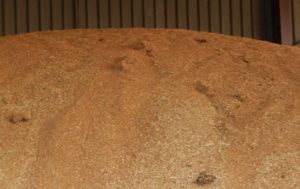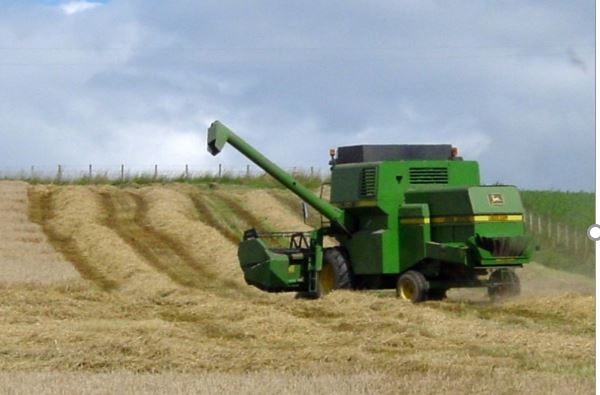Implications of COVID-19 on the movement of grain
17 August 2020Cereal farmers are reminded to consider the implications COVID-19 and lockdown may have in terms of grain movement, particularly for crops usually sold on an “as available” basis or for harvest movement with end users having reduced storage for this years crop.
 This has implications for grain handling at harvest with growers required to store grain on farm much longer than previous years.
This has implications for grain handling at harvest with growers required to store grain on farm much longer than previous years.
Most milling and feed cereal contracts require grain to be below 15% moisture content however most malting contracts allow moistures of up to 19% to be accepted and frequently malting barley may be stored undried with uplift occurring within a week or so.
Undried crop will start to heat, leading to a deterioration of quality, the formation of potentially hazardous moulds or mycotoxins and infestation unless it is kept cool or dried. This process will occur more rapidly in grain stored at higher moistures or temperatures. AHDB have produced a safe storage calculator, which can provide an indication of how long specific bulks can be stored in their current state, allowing potentially problem lots to be prioritised.
Drying grain to under 14%m.c. and cooling to below 15°C will significantly reduce the risk of spoiling and infestation with fungi unable to grow and mites unable to reproduce at these levels. For grain destined for the malting market or others where germination is critical, taking the moisture content and temperature down further to 13%m.c. and 10°C is suggested. Care should also be taken to dry malting barley at lower temperatures than feed grains with grain and air temperature not exceeding 50°C and 60°C respectively with adequate airflow to preserve germination.
Grain should be cooled down as quickly as possible to prevent infestation or moulds and mycotoxins developing. Most insects will not reproduce in temperatures below 15°C however grain weevils can still breed slowly at 12°C. Grain can be taken down below these levels and should be no more than 12°C by the end of December. Care should be taken however with malting barley which should not be stored below 10°C.
Typical cooling methods include duct flooring, horizontal tubes or vertical systems (e.g. pedestal fans) with the number of ducts appropriate to grain depth. Grain should be ventilated at a rate of 10m³/hr/ton and in most cases best results will be achieved by blowing air up through the grain as opposed to sucking air down.
Grain will respire in store, forming carbon dioxide and water, leading to sweating or condensation – ideal for the development of moulds, infestations or even sprouting grain. This damper air therefore needs to be removed which means sheds used for longer term storage must have good ventilation e.g. gable fans etc.
While monitoring should be undertaken every few days initially, once grain reaches its final storage temperature weekly monitoring of temperature and moisture content along with the use of traps to detect the presence of insects or mites should be undertaken with localised increases in moisture of 2% or increases in temperature of 1°C cause for further investigation.
Grain stores and equipment should be thoroughly cleaned and free of pests with hoovering and suitable treatments used where necessary. While short term stores need only to have a rainproof roof and clean solid floor, they must be empty by 31st October whereas buildings used for long term storage should be fully waterproof with walls and floors of solid construction, doors that fit properly and should exclude birds and animals with monitoring for ingress by pests regularly undertaken.
As always growers should be aware of end users requirements and stipulations as well as farm assurance standards.
The following guides provide further information on grain drying and storage.
“Ensuring good germination in malting barley” HGCA Topic Sheet No.60 Summer 2002.
Sign up to the FAS newsletter
Receive updates on news, events and publications from Scotland’s Farm Advisory Service

